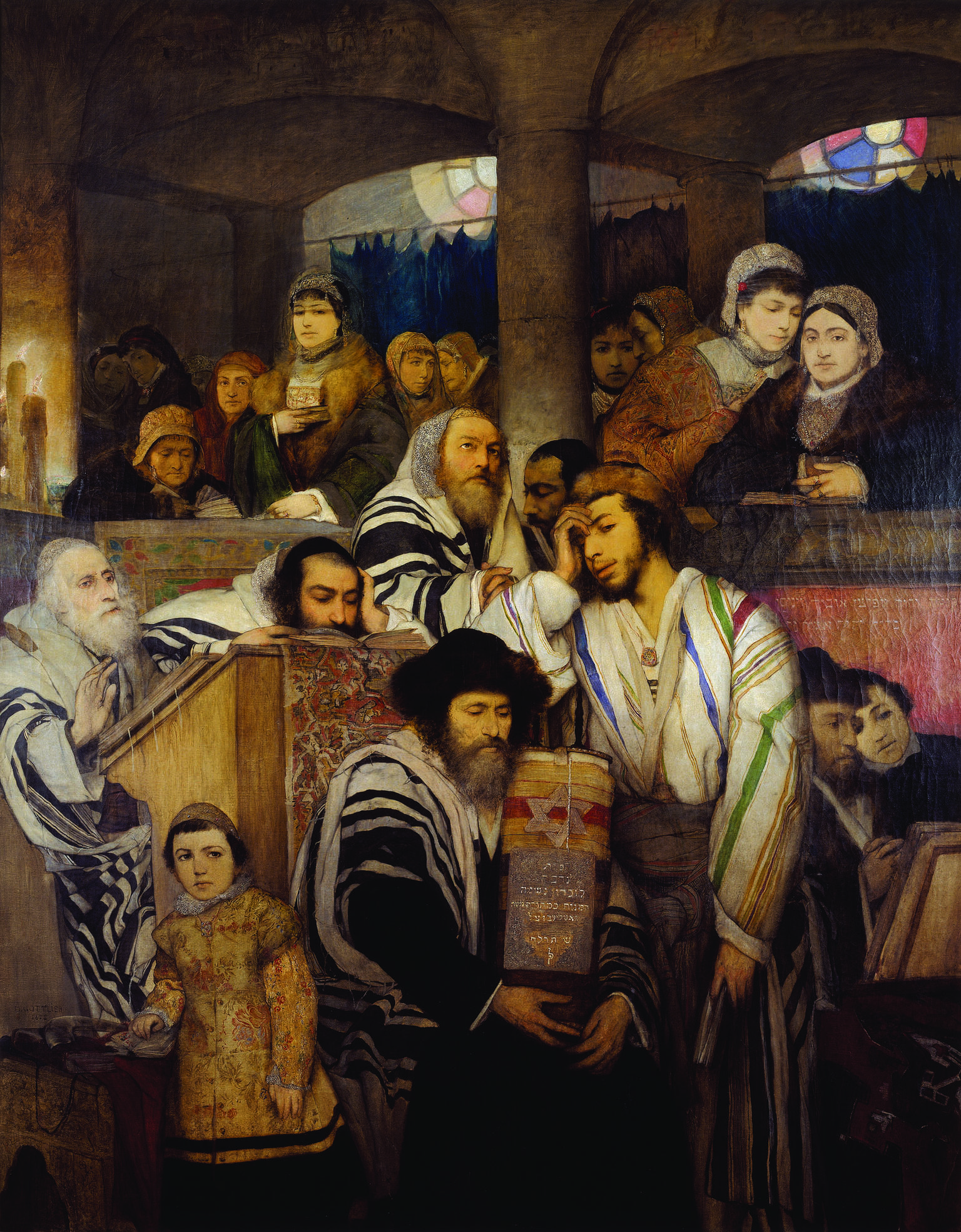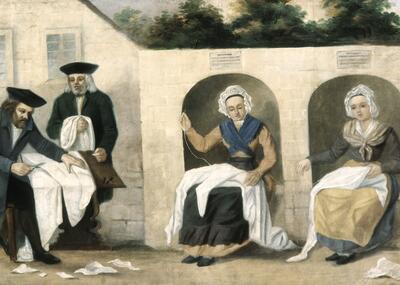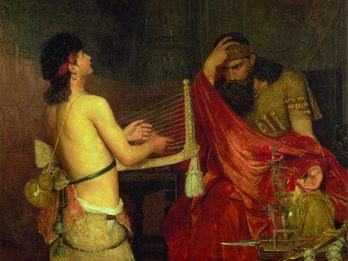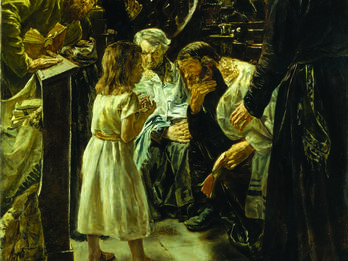Jews Praying in the Synagogue on Yom Kippur
Jews Praying in the Synagogue on Yom Kippur was one of the last paintings made by Maurycy Gottlieb before his death. Painted from memory when he was living in Vienna, it depicts a Yom Kippur service, possibly in the synagogue in Drohobycz, where he prayed in his youth. The stained-glass windows in the background of the women’s section and the columns supporting the vaulted roof suggest that possibility. The artist included three self-portraits at different ages: the young man with his head leaning on his hand at center, the young boy with the brocade coat at left, and a boy sharing a prayerbook with his father at right. It is thought that the young woman holding a prayerbook at upper left and the woman whispering to another woman are both meant to represent the same person, his fiancée Laura. Oddly, the mantle of the Torah scroll is embroidered with the words “. . . donated in memory of R. Moyshe [the artist’s Hebrew name] Gottlieb, the righteous of blessed memory . . . 1878,” a foreshadowing of the artist’s death at an early age. The work exudes sadness and melancholy, but perhaps minimal devotion. Gottlieb died a year after the painting was completed.
Credits
Published in: The Posen Library of Jewish Culture and Civilization, vol. 6.








